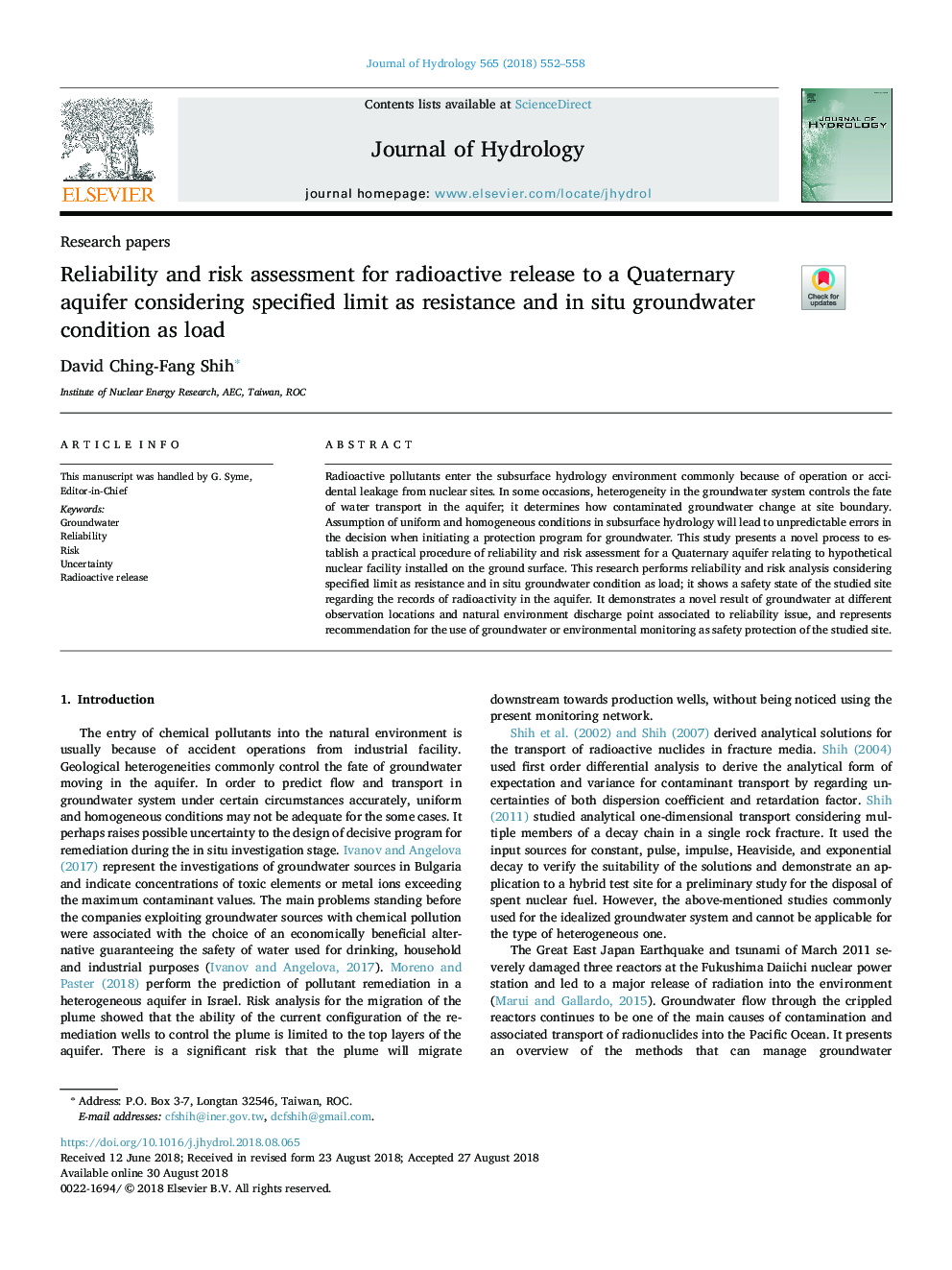| Article ID | Journal | Published Year | Pages | File Type |
|---|---|---|---|---|
| 10118242 | Journal of Hydrology | 2018 | 7 Pages |
Abstract
Radioactive pollutants enter the subsurface hydrology environment commonly because of operation or accidental leakage from nuclear sites. In some occasions, heterogeneity in the groundwater system controls the fate of water transport in the aquifer; it determines how contaminated groundwater change at site boundary. Assumption of uniform and homogeneous conditions in subsurface hydrology will lead to unpredictable errors in the decision when initiating a protection program for groundwater. This study presents a novel process to establish a practical procedure of reliability and risk assessment for a Quaternary aquifer relating to hypothetical nuclear facility installed on the ground surface. This research performs reliability and risk analysis considering specified limit as resistance and in situ groundwater condition as load; it shows a safety state of the studied site regarding the records of radioactivity in the aquifer. It demonstrates a novel result of groundwater at different observation locations and natural environment discharge point associated to reliability issue, and represents recommendation for the use of groundwater or environmental monitoring as safety protection of the studied site.
Related Topics
Physical Sciences and Engineering
Earth and Planetary Sciences
Earth-Surface Processes
Authors
David Ching-Fang Shih,
